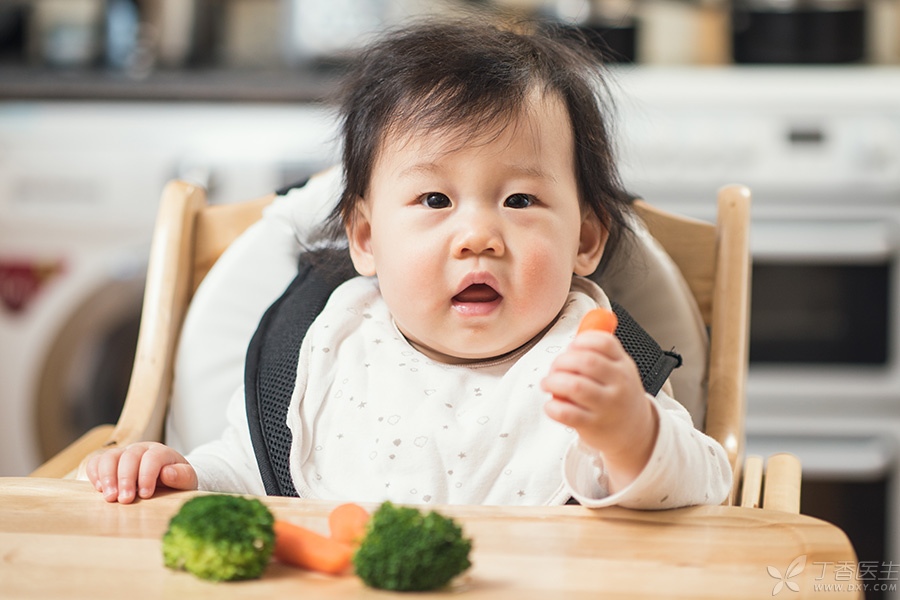
Some people always ask Dr. Clove:
What should I do if I want to teach my baby to eat?
In fact, eating does not need to be specially taught. Following the baby’s development characteristics and cooperating with [finger food], the baby will take the initiative to learn to eat.
Finger food has many benefits.
1. Let the baby learn to eat
I believe many parents have such experiences:
I have prepared supplementary food for my baby and am preparing to feed it. However, my little ancestor refused to sit and eat obediently. He always stretched out his hand to rob things. Whether it was the spoon in my parents’ hands or the food in the bowl, he was covered with food and the table was full. The little ancestor was still very good at it.
In this case, parents must not get angry. This is a good thing. Prepare [finger food] quickly, so that the baby can chew the food with his hand, cultivate the awareness of eating independently, and encourage the baby to eat by himself.
2. Exercise fine movements and hand-eye coordination
When the baby starts to grab something to eat by himself, they will think hard about how to grab and eat, which is very helpful to exercise the baby’s fine movements and hand-eye coordination ability.
Step 3 Exercise your chewing ability
For the baby, learning to chew is a very important thing. Through the introduction of finger food, the baby can learn how to chew better.
Finger food, add this
Adding finger food to the baby is also important. It should be arranged by comprehensively considering the baby’s grasping ability, chewing ability and swallowing ability.
Dr. Clove has already prepared recipes for everyone. Come and have a look!
One stage (7 ~ 8 months)
Babies at this stage can begin to try finger food. At first, it is suitable for eating food that is easy to grasp, soft and rotten, and easy to swallow.
At this time, they often grab the food with a small fist, so parents can cut the food into slices and strips for the baby to grab, such as:
- Soft fruits: avocado slices/strips, banana slices, butter strips, etc. Steamed vegetables: small broccoli, pumpkin strips, sweet potato (purple potato) strips, potato strips, wax gourd strips, eggplant strips, yam strips, etc.
Examples of recipes:
- Banana strips: Peel, cut into about 6 cm strips, suitable for baby to grasp, can be wrapped in baby rice flour to prevent skid. Wax gourd strips: remove pulp and peel wax gourd, cut into small strips suitable for baby to grasp (about 6 cm), steam/boil until soft and rotten. Small broccoli: wash, break into small pieces, steam/boil until soft and rotten.

The second stage (9 ~ 10 months)
At this stage of the baby, chewing ability slowly improved, small hands also slowly opened, can use fingers to pinch things, at this time, can give the baby to eat some slightly chewy, also more suitable to use fingers of particles, lumps of food. For example:
- Soft fruits: apple slices/pieces (too hard to cook), mango strips/pieces, kiwi fruit pieces, pitaya pieces, ripe peach meat pieces, ripe strawberries; Steamed vegetables: carrot pieces, white radish pieces, broccoli pieces, cauliflower pieces, zucchini pieces, lettuce pieces, night flowering pieces, mushroom pieces, etc. Other cooked foods: egg pieces, pork liver, salmon pieces, spiral (shell) spaghetti, steamed bread slices, bread slices, dried bean curd, etc. Commercial finger food: molar biscuits, puffs, small dissolved beans, etc.
Examples of recipes:
- White radish pieces: peel, cut into small pieces, steam/boil until ripe and soft. Lettuce pieces: remove the skin, cut off the old roots, cut the tender parts of lettuce into strips, steam/boil until ripe and soft. Pig liver pieces: soak to remove blood, wash, cut into small pieces, add scallion and ginger to remove fishy smell, boil. Egg pieces: Cut eggs into quarter pieces after boiling.

Three stages (11 ~ 12 months)
By the third stage, the baby’s chewing ability will be better, and you can consider challenging harder-to-chew meat and mixed finger foods. For example:
- Cooked meat: cooked chicken shreds, beef grains, shrimps, pork grains, etc. Mixed food: wonton/dumplings (cut into small pieces), soft rice, rice balls, meatballs, egg cakes, etc.
Examples of recipes:
- Handmade shrimp balls: Shrimp has its head removed, its shell removed and its black thread removed. Cut it up with a knife, Then add a small amount of starch, egg white, Chop the shrimp into mud. Rub the shrimp into balls of appropriate size, Steam or boil for 5 minutes, Let it cool and give it to the baby. Pork stick: Stir the cabbage and pork into mud with a cooking machine. Add starch, a little water, Stir in one direction, then knead the pork into a stick shape, press it slightly by hand, steam it in the pan, cool it and cut it into pieces/strips. Fresh shrimp carrot and agaric balls: fresh shrimp meat, carrot and agaric are put into the cooking machine to beat mud, mix starch and egg white, stir in one direction, then knead it into a ball shape, steam it in the pan for 10 minutes, and cool it to give the baby food.
Dr. Clove should remind parents that before giving their babies new finger food, they must try a small amount first and not be allergic.
Moreover, each baby is unique and has different development conditions. The above-mentioned age at different stages can be used as a reference. Parents need to observe and judge which kind of finger food to add to their baby in what.
After all, it is not others who know the baby best, but the parents who watch the baby grow up day by day.
Everyone said, right?
